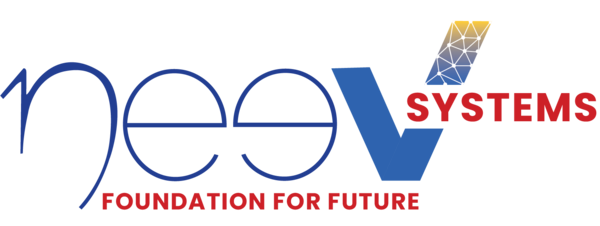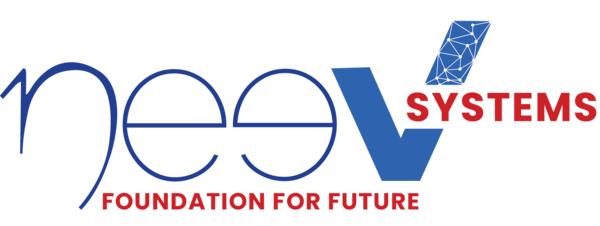Modern enterprises generate vast volumes of data every second. However, without proper management and integration, the data’s potential remains untapped, accumulating into dark data that is usually lost in silos. Effective data integration is crucial for transforming raw data into actionable insights, enabling informed decision-making.
Organizations collect data from disparate sources, making it crucial to integrate the data to extract usable insights for real-world use cases. Without data integration, business-critical data can become fragmented and disorganized. Data integration ensures that all information is consolidated in usable formats and is readily accessible, allowing stakeholders to leverage it for particular business scenarios.
By integrating data from multiple systems, businesses can achieve a holistic view of their operations, driving success through enhanced analytics. Understanding the principles and processes of data integration is essential for optimizing business performance and maximizing the value of your data.
The Importance of Data Integration
For data to be truly valuable, it must be readily available for analysis. Data integration involves collecting and consolidating data from multiple systems into a unified platform for processing, analysis, and sharing. It combines data from various internal and external sources (including structured, unstructured, batch, and streaming), providing a consistent view and making all relevant information readily available for analysis.
Data integration is pivotal in breaking down data silos and synchronizing disjointed tech stacks. Businesses need accurate, relevant, and up-to-date information to stay competitive, and integrating data from diverse sources can significantly enhance their performance. Effective data integration solutions streamline data manipulation, reducing the need for tedious manual processes and improving overall operational efficiency.
Better decision-making
Data integration allows business leaders to make more informed decisions, driving their success forward. Modern data integration tools have advanced analytics capabilities that provide actionable insights, adding tremendous value for businesses.
Error reduction
Organizations spend significant resources on identifying and rectifying errors. When departments have access to each other’s data, they can quickly detect and resolve discrepancies, ensuring a single source of truth is accessible to all relevant stakeholders across the organization.
Improved employee productivity
Data scattered across various systems forces employees to waste time searching for information. By integrating data, employees across all departments and locations can access a unified view of organizational data. It enhances collaboration and efficiency, saving significant time and resources.
Improved efficiency and time savings
Integrating data into business processes dramatically reduces the time required to prepare and analyze data. Automating unified views eliminates manual data collection, freeing up time for analysis and execution, thus making the organization more productive and competitive.
Increased competitiveness
Enterprises that prioritize data integration can fully utilize their data assets, creating more relevant and impactful products and solutions that effectively address real-world business challenges. Besides enhancing efficiency, it also gives them a competitive edge in the market.
Different Approaches to Data Integration
Several approaches to data integration are implemented by data professionals (developers, engineers, and architects), either through manual coding or by utilizing data integration tools to streamline and automate the system.
1. ETL (Extract, Transform, Load)
ETL is a traditional approach where data is extracted from various sources, transformed in a staging area, and then loaded into the target system, typically a data warehouse. This method is ideal for small datasets requiring complex transformations, as it allows for fast and accurate data analysis in the target system.
A specific method within ETL, Change Data Capture (CDC), identifies and captures changes made to a database, which are then applied to another data repository or made available for ETL or other integration tools.
2. ELT (Extract, Load, Transform)
ELT is a more modern approach where data is immediately loaded into the target system, such as a cloud-based data lake or warehouse, and then transformed within the target system. This method is suitable for large datasets where timeliness is critical, as loading is often quicker. ELT operates on a micro-batch or CDC timescale, with micro-batch loading only the modified data since the last load and CDC continuously loading data as it changes at the source.
3. Data streaming
Data streaming integration continuously moves data in real-time from source to target, rather than loading it in batches. Modern data integration platforms can deliver analytics-ready data to streaming and cloud platforms, data warehouses, and data lakes, facilitating real-time analysis and decision-making.
4. Application integration (API)
Application integration enables separate applications to work together by moving and syncing data between them. This approach is commonly used to ensure consistency across operational systems, such as synchronizing data between HR and finance systems. Application integration often involves unique APIs for data exchange, and SaaS application automation tools can help create and maintain these native API integrations efficiently and at scale.
5. Data virtualization
Data virtualization delivers data in real-time only when requested by a user or application, creating a unified view by virtually combining data from different systems. This method is well-suited for transactional systems requiring high-performance queries, providing on-demand access to data without physically moving it.

Enhance Your Business Intelligence
Challenges of Data Integration
Data integration is crucial for making informed decisions, but it comes with several challenges that can hinder its effectiveness. Addressing these challenges is essential to ensure data remains accurate, timely, and secure.
- Delays in delivering data
Timely data delivery is often critical for business operations. For instance, when an inbound lead is received, extracting, transforming, loading it into the data warehouse, and pushing it back into downstream applications must happen almost instantly. Unfortunately, manual handling of these workflows is typically slow and inefficient.
Any delay can hamper analytics and reporting. Without real-time data, organizations can end up making wrong decisions based on stale or obsolete data.
Tip: Implement integration solutions that trigger automated workflows, ensuring that data moves swiftly and efficiently across applications and teams in near real-time.
- Security risks
Integrating significant amounts of confidential and sensitive data—like customer billing information, employee social security numbers, company financials, patient data, etc—poses substantial security risks. A breach can damage the organization’s reputation and violate data privacy regulations such as GDPR.
Tip: Use a solution that supports robust security measures, including data encryption, data retention policies, data masking, and role-based access controls, to safeguard sensitive information.
- Resourcing constraints
Building a data integration process from scratch may seem appealing, but it demands extensive time and resources from your engineering and IT teams. Managing a high volume of integrations between your data warehouse and various systems can be overwhelming and distract employees from their primary responsibilities.
Tip: Invest in a low-code/no-code platform that offers pre-built connectors for leading business applications and data warehouse platforms, enabling quick and seamless integration.
- Data quality issues
Data quality problems, such as duplicate data or incorrect formats, can overwhelm IT and engineering teams, mainly when dealing with large volumes of data. These teams might not be familiar enough with the data to identify errors effectively.
Tip: Low-code/no-code integration solutions enable professionals who are more familiar with the data to participate in implementing integrations and data flows. Expert-led implementation ensures that the data moves smoothly across applications.
How to Streamline Data Integration for Improved Analytics
Optimizing data integration is crucial for leveraging advanced analytics, ensuring data accuracy, and enhancing decision-making capabilities. Here are some key strategies to streamline data integration effectively:
Choose the right data integration approach
Selecting the appropriate data integration pattern depends on data sources, target systems, and use case requirements. Options include:
- Batch Integration: Suitable for periodic, high-throughput, and low-latency data transfers, such as in data warehousing or ETL processes.
- Streaming Integration: Ideal for continuous, low-throughput, and high-latency data transfers, often used in real-time data ingestion or analytics.
- Event-Driven Integration: Triggered by specific events or messages, commonly used in microservices or event-sourcing scenarios.
- Hybrid Integration: Combines multiple patterns to handle complex or dynamic data scenarios.
Use the right data integration tools
Optimizing data integration requires tools that effectively manage the volume, velocity, complexity, and variety of your data sources and destinations. When choosing integration solutions, key factors include scalability, performance, reliability, security, flexibility, and ease of use. Low-code/no-code integration platforms extending automated workflows and triggers can eliminate manual work that is often prone to errors and save valuable business hours.
Apply data quality and governance principles
Ensuring data quality and governance is vital for maintaining the integrated data’s accuracy, consistency, and usability. Poor data quality can lead to errors, inefficiencies, and mistrust, while strong data governance defines and enforces policies, standards, and roles. The standard data governance principles include data profiling, data cleansing, data validation, data lineage, data cataloging, and data security.
Optimize data integration performance
Performance optimization impacts the speed, cost, and reliability of data flows. Monitoring and measuring data integration processes, identifying and resolving bottlenecks, and applying best practices can significantly enhance efficiency. Teams should employ best practices, including parallel processing, partitioning, caching, compression, indexing, and tuning.
Adopt a data integration framework
A data integration framework provides guidelines, methodologies, and best practices for designing, implementing, and managing data integration projects. It ensures a consistent, standardized, and reusable approach, aligning data integration goals with business objectives and stakeholder expectations.
Network with data integration experts
Gaining insights from experts who have successfully implemented large-scale data integration solutions can be invaluable. You can learn from blogs, podcasts, books, courses, webinars, and events. Also, networking with experts through online communities, forums, and social media platforms can help teams identify areas for improvement in integration implementation and optimize it for real-time analytics and reporting.
Partner With Neev Systems for Expert Integration Implementation
At Neev Systems, we specialize in providing top-notch integration services in partnership with leading integration platforms such as MuleSoft, Oracle Integration Services, Dell Boomi, and SnapLogic. Our strategic implementation and advisory services ensure seamless integration across your IT stack, delivering real-time and consistent data views throughout your systems and applications.
Our integration services encompass:
- Consulting
- Implementation
- Infrastructure management
- API-led connectivity
- Migration and upgrades
- Custom connectors development
- Support and maintenance
How Neev Systems Enabled Seamless Data Integration for View Inc.
About the Client
Challenges
- Inefficient Data Integration
- Error Log Management
- Complex Connectivity
- Data Visibility
Benefits
Operational Transformation
By seamlessly integrating Salesforce (SFDC) and Oracle EBS, critical business processes such as order creation, sales order processing, tracking, and fulfillment were streamlined. This integration empowered View Inc. with enhanced data accuracy and operational agility in managing its sales and order workflows.
Real-time Data Exchange
Achieved seamless real-time data exchange between Salesforce (SFDC) and Oracle, allowing timely updates on sales orders, customer information, order statuses, and inventory levels. While inbound integration transmits data from SFDC to Oracle, outbound integration sends updates from Oracle to SFDC. This ensures accurate data synchronization, optimizes business processes and enhances operational efficiency.
Seamless Data Synchronization
Dell Boomi enabled seamless bidirectional data synchronization between Oracle E-Business Suite (EBS) and Salesforce for products, order releases, and order lines. This ensured that updates in one system were accurately reflected in the other, maintaining data consistency and enhancing operational efficiency.
Read the full case study here to learn the details of our solution implementation for View Inc. and the benefits they achieved.
Leveraging industry-leading integration platforms and best practices, our skilled experts design, implement, and manage tailored integration solutions to maximize the potential of your IT ecosystem. We employ agile delivery models, reusable integration patterns, and custom solutions to build state-of-the-art integrations.

Enhance Your Business Intelligence

Amar Chand Dasari
With 15 years of experience in Data Analytics and Business Intelligence, Amar excels in designing scalable solutions for industries like Manufacturing, Finance, and Telecom. His expertise includes hybrid BI architectures with AWS, Azure, and Snowflake. Amar is passionate about delivering end-to-end solutions that turn data into actionable insights.


